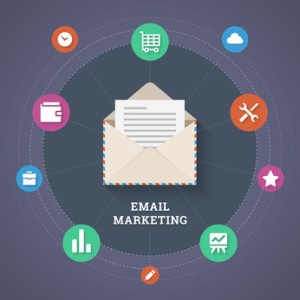
Email marketing is an excellent way to get a hold of customers and generate new business leads. But many small businesses fall into common bad practices in their hurry to make connections. Here are some of the best email marketing strategies that will come in handy to get your email campaign off the ground.
Unsolicited Emails
Your emails could be flagged as spam if you send them to people who didn’t request to receive them. This is terrible for your business’s reputation, a waste of everyone’s time, and you may be blocked by some ISPs as a result.
Your email marketing strategy needs to be centered on the idea of only contacting people who have expressed interest in either your business, your services, or your industry in some way. For that reason, you should include spaces on your website and social media profiles where those interested can subscribe to receive your emails. By doing this, you’ll also know who will make a good lead and who wont.
Frequency and Subscription
Let subscribers dictate how often they would like to get email messages from your business and how much information they wish to disclose. Don’t send out emails everyday, but a weekly or monthly overview of your company’s activities, events, and posts is a good place to start.
You should also have an unsubscribe link where the recipient can unsubscribe to your emails if they choose. Not only is it a good idea, it’s the law. Don’t fail to provide an unsubscribe link and don’t bury it so deep in the text that it is not readily apparent. You should strive to make your clients feel they’re in control and you’re not trying to manipulate them.
Personalized Messages
Like all marketing, treating your customers as individuals can make them more likely to respond positively to your email marketing strategies. For example, if you have an idea of why they wanted your emails, include that reason in your email. You can go far beyond simply inserting a first name into a standardized message. Use the knowledge you have of them from their public social media profiles or conversations to make connections with them and develop your relationship.
Email Content
Avoid boring or overwhelming your customers with the marketing emails you send out. Focus on one topic per email and write a short subject line to entice your customer to click through to read more. The sad truth is that most people delete the majority of their emails without even opening them. So, your subject line needs to do a lot of heavy lifting. Use humor, well known sayings, or changes in font to help it stand out better. Your recipient is probably getting hundreds of emails just like yours, vying for their attention, so you need to make it stand out from the rest as best you can.
Additionally, keep your emails brief and to the point. If you try to include too many topics, you’re email will be way too long and the recipient won’t even bother to read the first sentence. Only include what’s necessary and relevant to that person. You can always include a link back to a specific webpage the recipient can visit if they want a more in depth discussion or more information.
Good Design
You should take the time to design a template that allows you to incorporate your company logo, and consistent formatting throughout all your marketing materials.
This will make you more recognizable to your readers when they visit your website, see your posts on social media, and find your result in Google. But, good design does more than just align your brand. It’s creates an enjoyable and easily navigatable experience for online searchers. When you use a standard design for your email marketing campaigns, your social media accounts, and your website, your customer becomes familiar with how it’s laid out and can easily find what they’re looking for.
Your Target Group
While persistence is an important factor of any email marketing strategy, it will be wasted if you aren’t sending to the right group of prospects. Use your buyer personas to organize your prospects and existing customers into similar groups based on industry, location, age etc.
Once you define your different types of prospects and customers, you can tailor your email marketing content to specific groups. You may find a lot of overlap between your prospect and customers, or you may need to individualize many messages. It all depends on who your customers are.
Creativity
Try mixing up the format to be more personal. If you typically follow a format in your email marketing campaigns, don’t be afraid to personalize your messages a bit more.
Include the recipient’s first name in the address and use a less formal sign off. You can also include images or infographics right in the email to give it color and draw the recipient’s attention. The effectiveness of video marketing is on the rise as well. Instead of filling your emails with text, create a short, personalized video where you address the customer and tailor your message personally. Videos will hold the attention of the recipient and they may actually pay more attention to what you’re saying.
In Conclusion
Email marketing is an excellent way to contact your customers and make your customer base grow larger. Use the above email marketing strategies to strengthen your customer connections and grow your small business audience.


